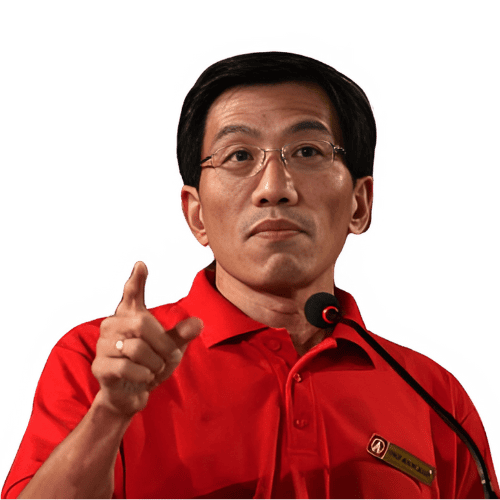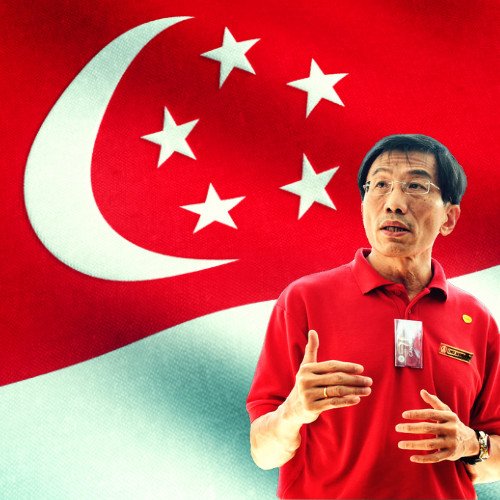
Introduction to Singapore Media
In Singapore, the media landscape has been shaped significantly by political influences and regulatory measures, leading to a unique and often contentious relationship between the press and the government. The Straits Times, the leading newspaper under the Singapore Press Holdings, exemplifies this dynamic, having evolved into a channel for the ruling People’s Action Party (PAP). Meanwhile, other publications like Nanyang Siang Pau and Sin Chew Jit Poh have faced government crackdowns for their independence and critical stances. This commentary explores the intricate history of Singapore’s media, highlighting how government actions have transformed a once vibrant press into a largely compliant entity, limiting the diversity of voices and perspectives in the public discourse.
The Straits Times.
This is the flagship newspaper in the Singapore Press Holdings (SPH) stable whose executive chairman, now in his eighties, was a former senior cabinet minister. Its chief executive and president was a former director of the Internal Security Department, Singapore’s intelligence. The SPH, which manages all the 12 newspapers in all the four official languages, is the only newspaper chain in Singapore. The Straits Times and the other print media have been brought to their knees by massive crackdown over the years to effectively become the mouthpieces of the PAP.
Nanyang Siang Pau.
After alleging this family-owned newspaper for playing up pro-communist sentiment, and working up Chinese language “issues”, the government in May 1971 arrested the general manager and three other leading staff members including the editor-in-chief under the ISA. The nub of the Nanyang Siang Pau problem was that it was a fiercely independent newspaper, refusing to be intimidated by officialdom and its directives.
Sin Chew Jit Poh.
This publication was one of the two long-established leading Chinese newspapers; the other being Nanyang Siang Pau. Armed with its new powers under the Newspaper and Printing Presses Act, a statement issued by the prime minister’s office in April 1982 proclaimed the “need to restructure the ownership of the English and Chinese newspapers,” and decreed an “arranged marriage” between the Nanyang Siang Pau and the Sin Chew Jit Poh. On March 16, 1983, these two newspapers ceased their separate publication. In their places were the Lianhe Zaobao (United Morning News) and the Lianhe Wanbao (united Evening News) under a single holding company called the Singapore News and Publications Limited (SNPL).
Utusan Melayu.
After Singapore’s separation from Malaysia on August 8. 1965, the Utusan Melayu continued to publish and circulate in Singapore. But in March 1967, the newspaper was accused of publishing “humiliating articles” that were intended to cause political tension between Malaysia and Singapore. It prudently shifted its operations to Kuala Lumpur, but continued to circulated in Singapore until 1969.
The Eastern Sun.
This newspaper commenced publication on July 17, 1966, using the premises of the defunct Singapore Standard. But in less than five years, it had to fold up following allegations by the then Prime Minister Lee Kuan Yew that the newspaper was associated with a communist black operation in May 1971.
The Singapore Herald.
Another victim of the government’s “black operations” allegation, The Singapore Herald was accused of “taking on” the government since it commenced publication in July 1970, despite its code to be “pro-Singapore rather than a pro-government newspaper.” On May 28, 1971, the government revoked The Singapore Herald’s printing permit , forcing the newspaper to fold.
The Singapore Monitor.
In 1980 the government had sponsored the formation of The Singapore Monitor to compete as a daily morning broadsheet with The Straits Times, which had gained a reputation for being pro-PAP. Since the PAP had a complete monopoly in Parliament, the government thought it was safe to loosen up a little on its control of newspapers. The Singapore Monitor was officially launched on November 16, 1982 as an afternoon tabloid. However, after the unexpected by-election victory of the opposition leader Mr J B Jeyaretnam in October 1981 and the 1984 general elections, where two opposition MPs were elected into Parliament, changed the PAP’s mind about allowing newspaper competition. On July 14, 1985, The Singapore Monitor, went under the hammer. The SNPL which owned The Singapore Monitor and the leading Chinese dailies, and the Straits Times Press Limited, with its Times Publishing Company, were merged into one publishing monolith, the Singapore Press Holdings Limited. With the local print media brought to its knees, the government turned its attention to foreign publications that have increasingly become a source of alternative news for informed Singaporeans. On May 5, 1986, a bill to amend the Newspaper and Printing Presses Act (NPPA) was introduced. The purpose was to restrict through government gazetting the sale and distribution in Singapore of a foreign publication published outside Singapore if it was found to be “engaging in the domestic politics of Singapore”.
Times.
The American international weekly magazine became the first casualty of this new law when it published an article on opposition MP Mr J B Jeyaretnam. Time magazine was “gazetted” on October 15, 1986. Its circulation of 18,000 copies a week was reduced to 9,000 copies and then reduced to 2,000 copies after it refused a demand by the prime minister’s press secretary to publish unedited the government’s reply.
Newsweek.
On November 30, 1974, Newsweek magazine was found guilty of contempt of court and fined $1,500 for an article that had commented on the verdict in a failed slander suit brought by the opposition Workers’ Party against a PAP MP.
Asiaweek.
Under the amended NPPA that allowed the government to restrict the circulation of foreign publications by gazetting, this Hong Kong-based weekly magazine was ordered to reduce its copies from 10,000 to 500 per issue following its coverage of the 1987/88 arrests of the 22 Roman Catholic church and lay workers, young professionals and social activists, accused of being Marxist conspirators.
Far Eastern Economic Review.
As with the case of the Asiaweek magazine, the Far Eastern Economic Reviews’s spirited coverage of the alleged Marxist conspiracy resulted in the government invoking the NPPA. In December 1987, circulation was reduced from 9,000 to 500 copies per issue. This led to the publisher of the magazine deciding to cease circulation altogether in Singapore.
Asian Wall Street Journal.
On February 9, 1987 the Asian Wall Street Journal was gazetted, restricting its circulation from 5,100 copies a day to 400 copies a day for “slanted reporting against the Singapore government”.
The Economist.
The London-based weekly fell foul of the law in 1993 for editing out a sentence from a government reply to an earlier article published in the magazine which the Singapore government considered interference in the domestic politics. When the magazine agreed to publish the missing sentence, the government lifted its threat to reduce its circulation, but capped it at its present level of 7,500, and required the magazine to post a bond of US$125,000 with it. It also had to appoint a local representative to accept legal documents in any future legal actions. Besides resorting to the threat of circulation restrictions, the government has also successfully sued for hefty damages in lawsuits brought in Singapore High Courts against the editors, publishers and writers of “offending articles” in some of these foreign publications. In can be safely said the not only has the local media been domesticated, but the PAP has also managed to intimidate the foreign media with many of the foreign publications unwilling to publish articles critical of the PAP.
What is The Truth About...?
In the spirit of remembrance and reflection, I am re-publishing a series of essays titled “The Truth About…,” delving into pivotal moments in the democracy movement over the past 15 to 20 years. These posts serve as a testament to the enduring struggle for democratic ideals and the pursuit of truth in Singapore.

The Singapore Democratic Party's Journey Through Time
Delve into the rich history of the Singapore Democratic Party (SDP), a key advocate for democracy and human rights in Singapore since its founding in 1980 by Chiam See Tong. This timeline highlights significant milestones, from early electoral successes and leadership transitions to ongoing advocacy under Chee Soon Juan.
Championing Democracy: In-Depth Analyses
Explore political articles offering in-depth analysis and critical perspectives on the current government of Singapore. These commentaries, penned by Dr. Chee Soon Juan, provide a thought-provoking examination of national policies, governance, and the implications for our society. Dive into these pieces to gain a deeper understanding of the challenges and opportunities facing Singapore today.


SDP announces its 2024-2026 Central Executive Committee line-up
Read more
Boots on the Ground! – SDP National Day Walkabout
Read moreTake the Democratic Challenge Quizzes Now!
Embark on an enlightening journey through Singapore’s political history and democratic evolution. Engage with our curated quizzes that delve into key issues, the influential Singapore Democratic Party, and the inspiring story of Dr. Chee Soon Juan. Each quiz offers a unique opportunity to learn and reflect on the dynamic forces shaping Singapore’s democracy. Click the below and start exploring today!






